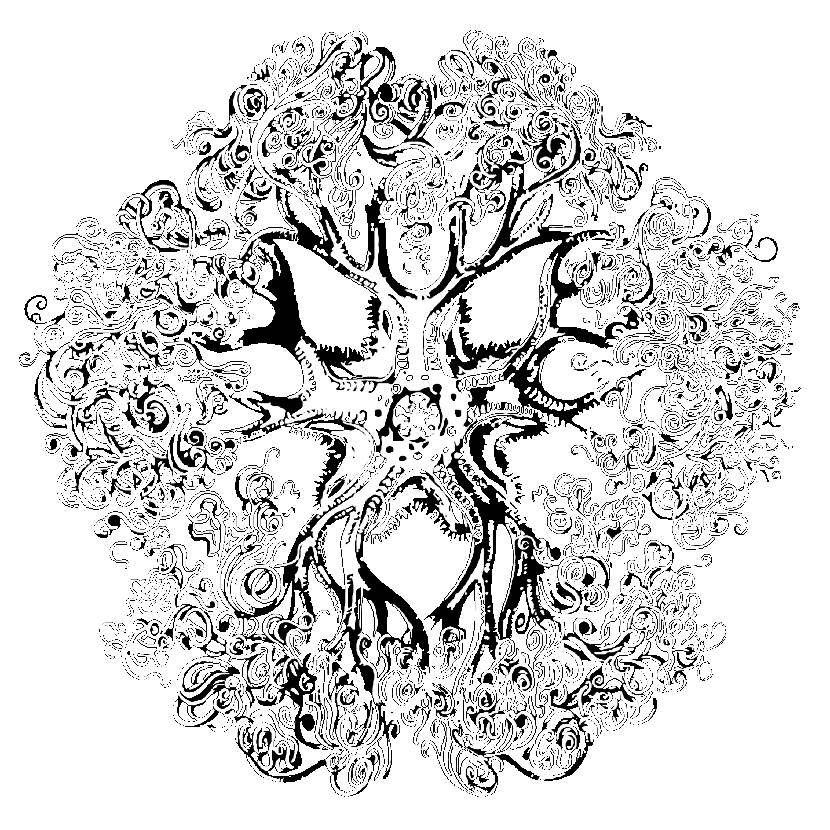One of the great mysteries of biology concerns the evolutionary stability of costly signals. Complex life exhibits a wide array of dazzling behaviors, rituals, and physiologies which, on the surface, seem to incur severe costs to one's chances of survival. A notable example is the male peacock, with its large tail glittering above the tall grasses of the Deccan wilderness, fluttering at the first sign of a potential mate or competitor. Beautiful, yet utterly burdensome. The male peacock's tail encumbers him with a lanyard more than twice the size of his own body, making nearly every task more difficult, and indeed far more risky: he could be spotted from miles away by a preying tiger. The energy and cost put into the tail seem absurd on the evolutionary level. Wasted energy and increased predation should lower one's reproductive fitness and be selected against, and yet, the peacock is here for us to marvel at.
The explanation for this phenomenon is Amotz Zahavi’s Handicap Principle, the observation that costly signals are often honest ones. The fact that the male can survive with such a burdensome appendage is a reliable and honest testament to his fitness, therefore, females adapt to seek out larger and more colorful plumes as a proxy for seeking out the strongest male over the course of evolutionary time. Put it this way: you can text a woman your interest, or you could hand-write a letter, potentially even write her a song. Prom & homecoming signs, learning the Waltz, and many other rituals of this sort are in place for this reason. The cost and the effort is the primary fixation, not necessarily the product itself. It is a certification of not only interest, but of capability and trustworthiness.
An arms race therefore follows in the game of intraspecific selection, with males incurring more risk to display stronger signals. Peacocks gradually grow longer and more colorful tails, elk grow larger and heavier antlers. The only upper limit is death; the signal grows stronger until it is no longer possible to outdo others without the rewards' quantity and quality plummeting off a cliff. Indeed, a popular theory for why the Irish elk went extinct is that its massive antlers, a textbook handicap signal, became too large and cumbersome for a changing Holocene environment. This phenomenon is known as runaway signaling, where competing signals increasingly up their frequency against one another until one either finds a comfortable ceiling, or dies. It is an evolutionary game of chicken over attention to one's costly signal.
In more prosocial species, there is another way to amplify one's signal over competitors: signaling outrage toward fellow members of the group. This does a number of things. For starters, it ensures false signals are exposed, making it safer to assume a display is honest. More importantly, it contrasts one's own signal as superior to its target of outrage. When the signal of outrage is emitted, onlookers can infer that the sender has an invested, and therefore honest, reason to be outraged. Game theory has successfully simulated the problem of outrage and runaway signals. When a group is ideologically uniform, the signaling of loyalty to the group become rather pointless. More importantly, it becomes impossible to tell if someone is simply lying. The natural response is outrage, punishing liars or hypocrites and promoting one’s status in one fell swoop. What models have noticed is that as the strengths of the signal emitted by members of the group increases, or rather the importance or severity of the group’s cause increases, so too does the chance of an individual becoming a target of outrage.

Just as costly signals shape the natural world, they also govern human social interactions, where displays of virtue and outrage curate the formation of groups. We have signals of our own, and complex systems that gauge winners and losers in these battles of identity. What I have described here, in terms of outrage and runaway signaling, has been covered in previous articles under its colloquial parlance of purity spiraling.
Purity spiraling, to give it a revised definition, is the process by which individuals or groups within a social sphere escalate their displays of moral or ideological virtue to outshine others at an increasing cost and risk to cohesion. These signals—whether public denunciations, performative gestures, or even exile—serve to demonstrate one’s superior commitment to the group's shared value system. However, symptomatic of runaway signaling, purity spiraling can reach a cliff's edge where the costs outweigh the benefits, leading to social division, exclusion, or even the collapse of the group’s cohesion. In this way, the evolutionary logic of costly signals not only shapes the natural world but also underpins the dynamics of human social behavior, and indeed politics & ideology, where the pursuit of status and trustworthiness drives ever-escalating displays of virtue.
A previous article looked at the history and belief set of radical right-wing organizations in the US, particularly dealing with why their fractious nature always ended in disaster, and how modern copycats of these organizations will likely experience the same fate. It was hypothesized that a key reason for the repeated failure was purity spiraling, as groups that are formulated upon the very basis of radical purity—a display of the strongest signal of virtue—will necessarily suffer from an already pervasive social phenomenon. In point of fact, these movements frequently dissolved themselves over issues pertaining to the perceived ideological purity of the individuals or groups in that sphere. Eventually, the demand for ideological purity became so strenuous that group formation itself became impossible, and the sphere has fizzled out entirely.
The Northwest Territorial Failure
On December 1st, 1996, a Sunday morning, I stepped out of the door of my apartment in North Carolina, and almost stepped right into a mound of clearly human feces. I know to a moral certainty that this act was committed by the National Alliance, and since then I am told that a certain individual living in Raleigh was responsible. I happen to believe tha…
A number of questions and criticisms were raised in response, specifically pertaining to the hypothesis of purity spiraling. What differentiates group formation at-large from purity spiraling? Are we allowed to form any groups at all? How can we tell friend from foe? Should we exile purity spiral-ers, or is that also purity spiraling? By my estimation, I believe these are all overgeneralizations of the phenomenon that can be characterized by one error. Particularly, this error is a misunderstanding of the runaway aspect mentioned beforehand. Yes, all ideological formation involves barriers to entry, unending fights over the group's ideas and purpose, and outrage towards nonconformists. As discussed, this is not only normal to group formation generally, but necessary. But in nature, complex rituals have evolved to limit the potential harm that comes with signaling. Specifically, there are upper limits on the arms race that place artificial boundaries on what lengths the group will go. Otherwise, the result is the dissolution of the group, and therefore selection has favored groups that promote these upper limits to prevent dissolution.
It is important to stress what purity spiraling isn’t. It is not setting standards or barriers to entry for a group, nor is it the strict maintenance of these borders. It is not criticism of leaders, groups, or individuals for failing to adhere to the structure and identity of the group. These are very clearly intrinsic to the formation of groups themselves. This misunderstanding of purity spiraling appears to confuse the concept with its sub-mechanism of outrage, however, it is the aspect of runaway signaling that poses the central problem. In hyper-competitive, hyper-puritanical groups or generalized spheres, the emphasis on outrage is exacerbated by the increasingly radical demands for the group. Hence, the use of terms such as spiral or runaway to describe this phenomenon. Unless the brakes are pumped at some indefinite point, the end result is entirely predictable.
This is why purity spiraling has been so particularly deadly to group formation on the right. The runaway has become so pervasive that any individual or group who seeks to place any upper limit at all himself becomes the target of outrage. As such, there is no upper limit to signaling. The entirely predictable end result is the group's dissolution, as the spectrum of beliefs and frequency of punishment of targets of outrage becomes far too much for any group to sustain. It is not merely that these groups do not have an established upper limit to purity spiraling, problematic enough as this is, it is that the very attempt to establish one at all would make oneself the target of outrage. The responses to the article on the Northwest Front show exactly this, as a slur for those who attempt to establish an upper limit has arisen: deradicalized. This was followed immediately by an exiling, with a large section of one response declaring that “I” in actuality share little in common with “them”. The mechanism is playing out precisely as I have described, as even more purity is inevitably proposed as the solution.
It is upon every group to determine for itself to which degree it will tolerate ideological dissent, and what to do with it when it is encountered. But what is not optional is the determination and maintenance of an upper limit to purity spiraling. Without this limit, the entropic cascade of runaway signaling and outrage will consume the group and dissolve it entirely. I maintain that this is precisely what occurred to the American far-right, and will continue to occur until it promotes some degree of its newfound slur, deradicalization.
A better solution is clear to me: rather than push for more purity, one should think of a firm upper limit to his group’s ideological purity, and wait for a counterbattery. If a group tells you in response that you do not belong, believe them, and let this process of selection play out. Time will separate fair captains from those intent on trading salvos all the way down to the bottom of the vortex. This is, ultimately, the meaning behind the tautology of might is right: if your ideology cannot survive, then it is entirely pointless to even begin to discuss its merits or virtues.
The fate of various far-right groups remains to serve as a cautionary case study for any movement driven by purity.
Further Reading
Amotz Zahavi - The Handicap Principle : A Missing Piece of Darwin's Puzzle
Frank McAndrew - Costly Signaling Theory
Blog Article on purity spiraling in other historical cases, such as the French Revolution









Good poast
Great read